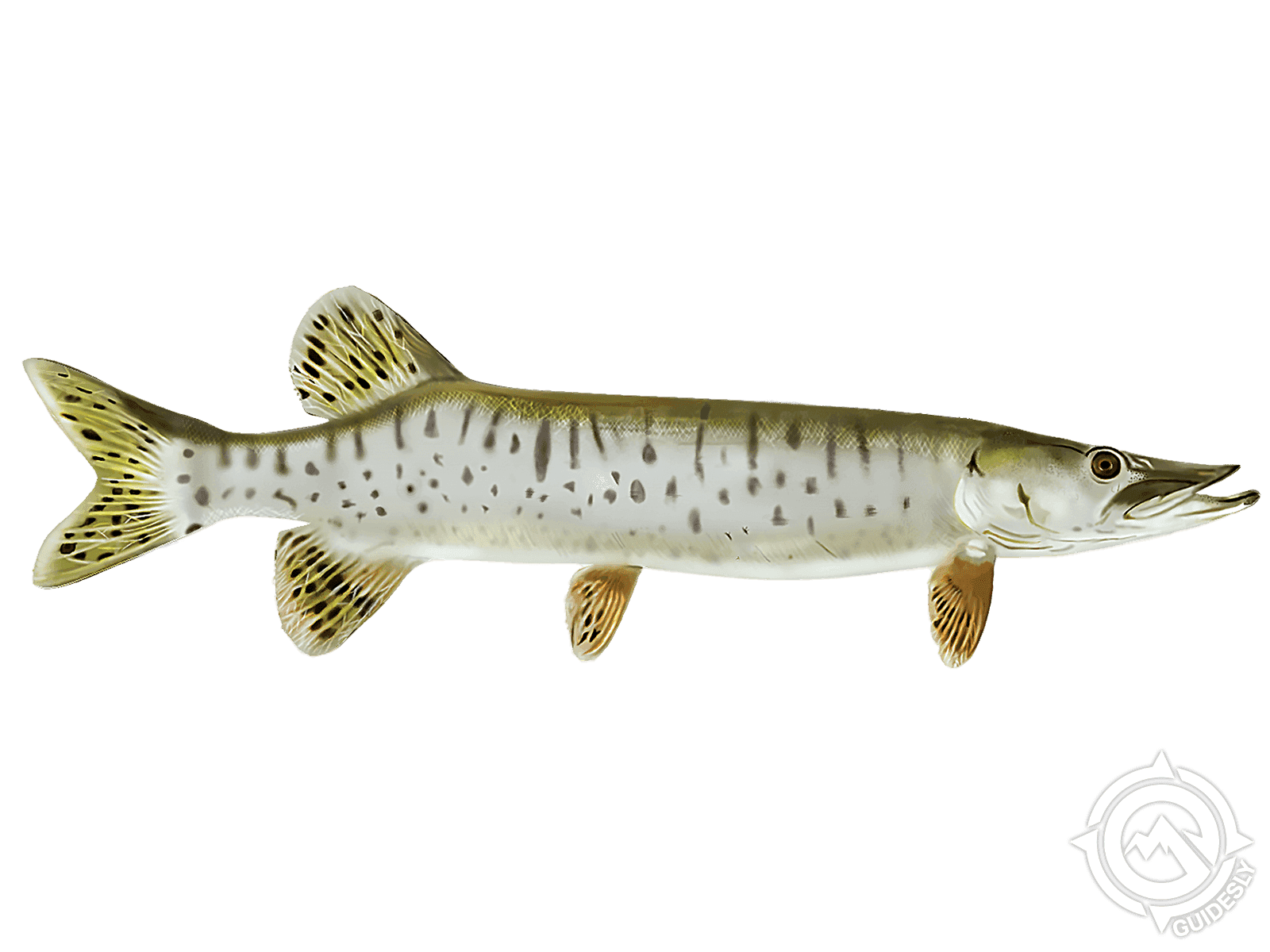Muskellunge

Species Details
Esox Masquinongy
Esocidae
Esociformes
Weedy Edges, Rocky Shoals, Shallow Waters
15 - 70 lbs.
24" - 72"
Muskellunge (Esox Masquinongy) Fish Description
The largest member of the Pike family, the Muskellunge is a freshwater fish from North America. Some people may even mistake it for a Northern Pike because of its duckbill looking snouts. However, there are three distinct differences. The first difference is the tailfin. Unlike the Northern Pike, the Muskellunge has a deeper indention on its tail which makes it look more forked. Next, the patterns on the body. Pikes are mottled; they have spots covering their body. Muskellunges – or Muskies – have stripes or bars, kind of similar to that of a tiger. And finally, the number of pores. Muskellunges have around 6-9 pores under their jaw.
As a member of the Pike family, they share a lot of things with the Northern Pike. One is their long body which makes them more ideal for ambushing. They have a flat head and their fins are set back into their body which helps them boost forward. For colors, Muskellunges can range between light silver, brown, or green with dark tiger-like stripes.
Diet and Size
Muskellunges are decapitators. They ambush their prey and rip its head off, normally swallowing them headfirst. Because they can grow big, Muskellunges can quickly climb to the top of the food chain in any freshwater body they’re in. Some eat insects, rats, mice, the occasional duck, and muskrats.
Muskellunges grow big! On average, they grow up to 2-4 ft and weigh between 15-36 lbs. However, if left alone, these fishes can grow up to a whopping 6 ft and weigh 70 lbs!
Interesting Facts about the Muskellunge
- Muskellunges are commonly killed in Maine.
- Because they are native to the waters in Maine, anglers who catch Muskellunges are advised to get rid of them. They are said to harm the environment.
- Anglers look at Muskellunges as trophy fish.
- Possibly because they put up a good fight and are huge. Who wouldn’t want a 6-foot fish as a trophy?
- Muskellunges love the sun.
- A Muskellunge has needle-like teeth.
- Wisconsin has a Muskellunge as their state fish.
- Because of their ferocity, Muskellunges do not have any known predators.
- Muskellunges are fast swimmers. This is attributed to their body-shape which is really made for getting the initiative on their prey.
Muskellunge – Fishing Techniques: How to Fish for a Muskellunge
Muskellunge is so popular that they have a term called Muskie Fishing just for it. When fishing for a Muskellunge, do not use hooks that have barbs. They are a pain to remove. It doesn’t help that these fish have needle-like teeth so, yanking a barbed hook is going to be a pain.
Next, for the lure, people can use artificial lures. Some choose lures that are large as to bait the Muskellunge into thinking it has a large prey. At the same time, using large lures help in covering more ground especially when you’re just drifting. Once you’ve found your lure, you attach your crankbait to it. Muskellunges usually respond to Crankbaits that wobble a lot.
Another technique is via trolling. Combined with the wobbly Crankbaits, these are usually dropped in weedy areas. Places with underwater reefs and rocky structures are known places where a Muskellunge is known to hide.
Make sure also you have a strong line. These fish are not lightweight and most of all they can snap your line by just clamping their jaws. Some say a 50-lbs test line will do the trick, especially when catching these fishes.
Habitat and Distribution
Muskellunges often loiter near weed edges and rocky shoals. These areas normally have shallow waters where the Muskellunge can be found sunbathing. Look for places that have a lot of vegetation and weeds and you’re bound to find a Muskellunge hiding in wait. They usually stay in Minnesota waters but you’ll have to find out which lakes exactly they’re in.
The best time to catch a Muskellunge is during the Autumn time. They usually hide during colder weathers but become more active during the middle or late summer.







